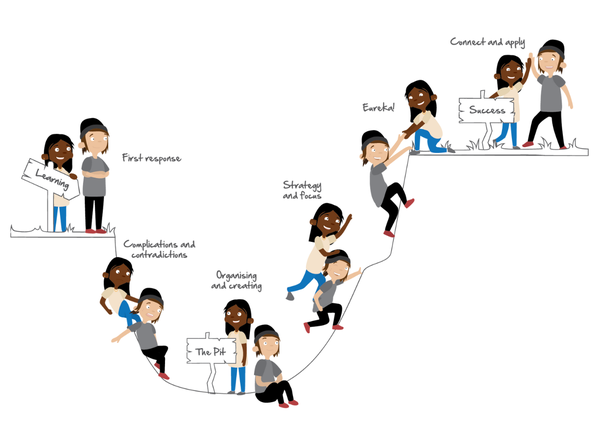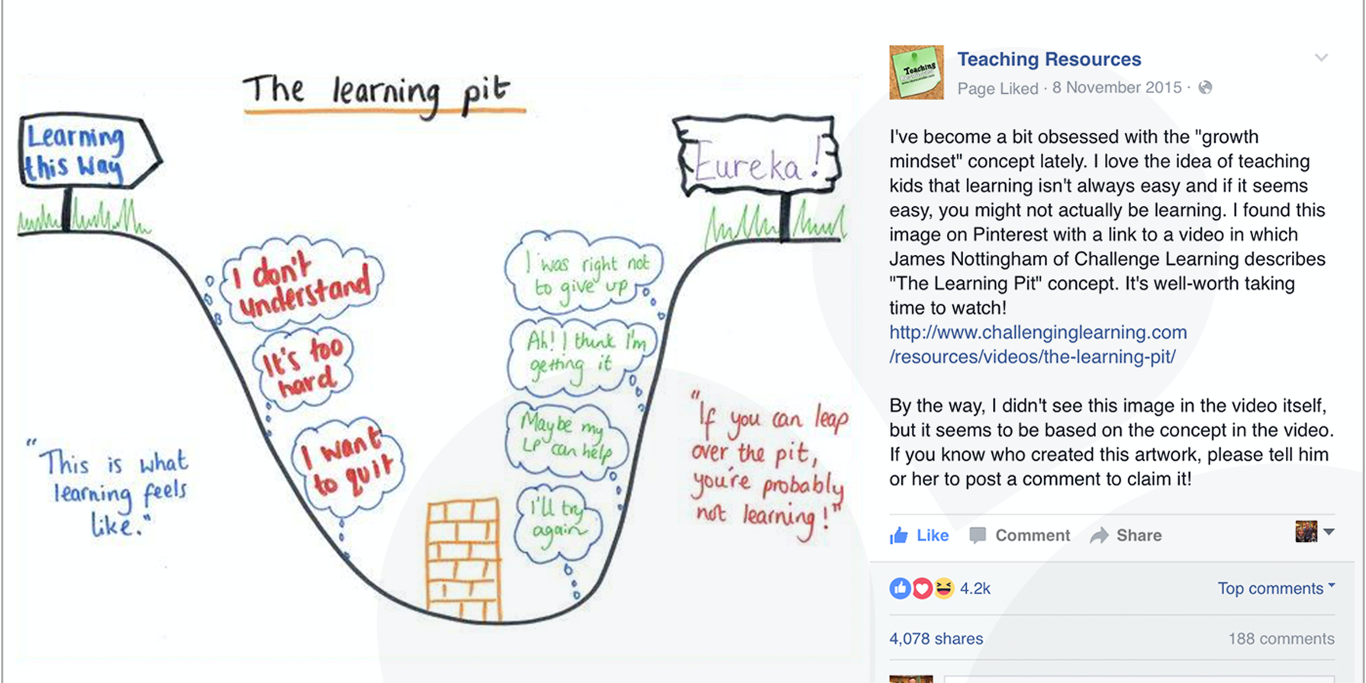The Learning Pit
Of James Nottingham's extensive body of work, his most recognised concept is undoubtedly the Learning Pit. This model is now used by tens of thousands of teachers to foster supportive learning environments, cultivate a growth mindset and normalise struggle as an essential part of the learning journey.
The model has been widely featured, with articles appearing in publications like the New York Times and on the BBC, as well as in academic work by prominent educational researchers. You can find links to these media and downloadable graphics at LearningPit.org
Contact James Nottingham

Learning Pits Around the World
The Learning Pit is remarkably popular and adopted widely. It's used in thousands of classrooms (Pre-K-12) around the world.
Features of the Learning Pit
James Nottingham's model articulates the cognitive space in which students grapple with challenging concepts (or actions), persist through difficulties, and learn how to strengthen their skills & understanding.
A METAPHOR FOR LEARNING
The 'Pit' represents a stage in learning where students encounter something difficult or unfamiliar.
Being in the Pit can cause frustration or uncertainty - but is a necessary step towards mastery.
The goal is to help students 'climb out of the Pit' through effort, reflection, persistence and strategy.
ENCOURAGES A GROWTH MINDSET
The Learning Pit helps students reframe struggle as opportunities to grow rather than to be thought of as failing.
Rather than avoiding challenges, students should be encouraged to enter the 'Pit'.
James Nottingham & Carol Dweck have collaborated together many times. Their concepts are equally complentary.
GUIDES STUDENTS IN FOUR STEPS
CONCEPT: begin with an important concept or principle.
CONFLICT: present challenges or ideas that create cognitive conflict in the minds of your students.
CONSTRUCT: guide students to experiment and actively build new understandings or solutions.
CONSIDER: encourage metacognition.
RECOMMENDATIONS
Read one of the books highlighted below and watch the videos in the Learning Pit collection (cd.5)
Download graphics from www.LearningPit.org (members of PD-OD will be able to do so for free)
Invite your students to draw their own Learning Pits - either freehand or using the graphics you've downloaded.
Application in the Classroom
Introduce the Learning Pit concept to your students and explain its stages.
Create a classroom culture where it's safe to struggle and ask questions.
Present genuine intellectual (or physical) challenges that will encourage your students into the Pit.
Provide appropriate scaffolding, strategies and opportunities for students to 'climb out of the Pit'.
Celebrate the process of struggle and the 'eureka' moments.
Introducing the Learning Pit to Students
This video is suitable for 5-13-year olds. Alternatives available on LearningPit.org.
Books About The Learning Pit
In addition to the English titles displayed, books are also available in Danish, Dutch, Spanish & Swedish. Full details at LearningPit.org/books

Alignment
The Learning Pit's popularity is partly due to how well it aligns with other prominent educational concepts like Carol Dweck's Growth Mindset and John Hattie's Visible Learning, both of which emphasise the importance of struggle, resilience, and metacognition in deep learning.

Simplicity and Depth
The metaphor of the Learning Pit is simple enough for young children to grasp, yet also resonates with older students by providing a visual & conceptual tool to explain how learning can involve confusion, struggle & intellectual discomfort before reaching clarity and mastery.

Shared Language
The Learning Pit has become a shared language in many schools for discussing the emotions & strategies involved in challenging experiences. It helps to normalise struggle as a productive part of the learning process and to develop critical, creative, caring & collaborative thinking.
Trademark and Copyright
A key factor in the success of the Learning Pit has been James Nottingham’s commitment to keeping his model open source. However, there continues to be misuse and misrepresentation by some teachers and consultants. Therefore, James Nottingham has now been awarded trademark protection from the Intellectual Property Organization (IPO). Patent & Trademark, Reg No. 6,381,157.
Class 16 (books, educational materials, lesson plans, manuals, brochures, presentation slides, and reports) – staff in educational institutions may use it non-commercially for the purposes shown in brackets, provided the attribution, "The Learning Pit by James Nottingham" is clearly displayed.
Class 41 (consulting services) – the use of the term or any images associated with the Learning Pit is not permitted without prior written permission from James Nottingham, who can be contacted via www.LearningPit.org
The Learning Pit Should Finish Higher Than It Begins
Many illustrations of the Learning Pit show the 'entrance' and 'exit' at the same height (example in the phone image below). This is a shame because students ought to know that going through the Pit is worth the effort and will lead to extra understanding and achievement. The version on the 'TV' with the higher right-hand side is therefore preferable.





